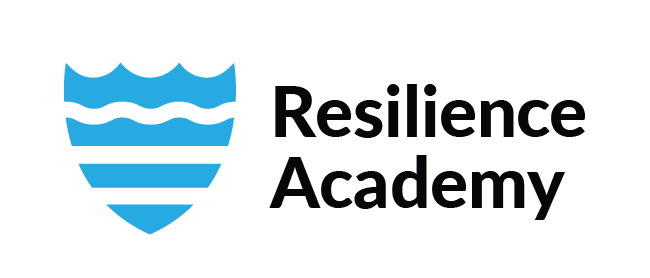[:en]Make the world’s population open data more accessible.
As part of procedures in preparing better plans and risk reductions against natural disasters, Disaster Managers need accurate population data for the affected area. This helps in many ways from determining the scale of the disaster, impact assessment and analysis to planning for disaster resilience.
There are numerous challenges to accurate population data, some national statistics agencies don’t release this openly, some do not have the resources to create accurate population information. Worldpop provides a solution to this challenge, in providing a platform for global population data.
Most of technologies (eg. InaSAFE) that enable the Disaster Managers to do natural disaster impact assessment allow the usage of population data but do not provide a way to get the data direct from worldpop, instead requiring separate population data. This leaves the users with one option and that is to manually add this data. Wouldn’t it be better to pull this data automatically?
As such, the aim of this project was to improve the usability of how Inasafe uses population information, using WorldPop. Our approach in making this tool was based on using open technologies and making any data obtained in the process open. This included a programming language called Python, a geospatial platform called Qgis and Node a cross-platform for developing web application.
This is how we built it.
API Implementation
It started by implementing an api for worldpop found here, this api was developed by Development Seed. This api implementation can be found here
Github Repository for the Api Implementation
QGIS and InaSAFE Integration
After setting up a server that query worldpop data. The next step was to add functionality into InaSAFE a qgis plugin that produces realistic natural hazard impact scenarios for better planning, preparedness and response activities.
We targeted this tool because it is the one that most Disaster Managers are familiar with, especially in Tanzania, where Ramani Huria made this possible by giving InaSAFE training to the Disaster Managers.
Source Code for this can be found here.
Site Development
The site is available here, this was developed by using Node. It features explanation on how to use the tool to download population data in Qgis and by using a python script. Check out the video showing the functionality of this.
This tool is now available for usage, as it has been tested thoroughly and it is stable, we’re in the process of pushing our work into the next InaSAFE release. Watch this space!
Please get in touch with us for any questions or on twitter at @RamaniHuria, @SamweliTwesa or @Mgweta
SPECIAL THANKS
[:sw]Wezesha takwimu za idadi ya watu duniani kupatikana na kuwa huria.
Kama sehemu ya taratibu za kupanga mipango bora ya kupunguza uharibifu utokanao na majanga asilia, wasimamizi wa maafa huwa wanahitaji taarifa sahihi za sehemu zilizoathirika. Taarifa hizi husaidia kwa njia mbalimbali kujua ukubwa wa maafa, kufanya tathmini ya athari na kufanya uchambuzi kwa ajili ya kujiandaa vizuri dhidi ya maafa.
Kuna changamoto nyingi kupata taarifa sahihi za idadi ya watu, baadhi ya mashirika ya takwimu kitaifa hayatoi hizi taarifa kwa uwazi, baadhi hawana rasilimali za kukusanya taarifa sahihi. Shirika la Worldpop linatoa suluhisho kwa hii changamoto, shirika hili limewezesha upatakinaji wa takwimu za idadi ya watu duniani.
Teknolojia nyingi (mfano. InaSAFE) zinazowezesha wasimamizi wa maafa kufanya tathmini ya athari za majanga asilia, huwa zinaruhusu utumiaji wa taarifa za idadi ya watu kufanya tathmini lakini hazitoi namna ya kupata hizi taarifa moja kwa moja kutoka shirika la Worldpop, badala yake huhitaji hizi takwimu pembeni. Hii inaleta mlolongo mkubwa kwa mtumiaji wa teknolojia hizi.
Ingekuwa vema mtumiaji aweze kuzipata hizi takwimu moja kwa moja kupitia hizi teknolojia.
Kutokana na hili, lengo la hii kazi ni kuboresha utumiaji wa taarifa za idadi ya watu katika teknolojia ya Inasafe, kwa kutumia WorldPop. Mbinu iliyotumika kwenye kutengeneza programu inayowezesha hili ni matumizi ya teknolojia huria na kuhakikisha takwimu zote zinazopatikana baada hapa zinakuwa takwimu huria. Hii ilihusisha programu nyingine kama Python, Qgis programu ya masuala ya ramani na Node ambayo ni mfumo kwa ajili ya kutengeneza programu za mtandao.
Na hivi ndivyo tulivyotengeneza.
Utengenezaji wa API
Ilianza kwa kutengeneza api kwa ajili ya Worldpop inapatikana hapa, hii api ilitengenezwa na Development Seed. Api hii inapatikana hapa.
Github, sehemu inapopatikana Api
Uunganishwaji wa QGIS na InaSAFE
Baada ya kutayarisha tarakilishi ya kukusanya takwimu kutoka Worldpop. Stepu iliyofuata ni kuongeza programu ya ukusanayji huu ndani ya teknolojia ya InaSAFE, ambayo ni teknolojia inayofanya tathmini halisia za matukio ya hatari, kwa ajili ya kuboresha mipango na kazi za uokoaji.
Tulitumia hii teknolojia kwa sababu wasimamizi wengi wa maafa wanaifahamu haswa wa Tanzania, ambapo Ramani Huria waliwezesha hili kwa kutoa mafunzo ya InaSAFE kwa wasimamizi wa maafa.
Mafaili ya programu yanapatikana hapa.
Utengenezaji wa tovuti
Tovuti inapatikana hapa, imetengenezwa kwa kutumia Node. Ina maelezo ya jinsi ya kutumia programu ya kupakua takwimu za idadi ya watu kwenye Qgis na kwa kutumia python.
Angalia video inayoonesha haya maelekezo.
Hii programu inapatikana kwa matumizi, imejaribishwa mara nyingi na iko vizuri, tuko kwenye taratibu za kuweka kwenye teknolojia ya InaSAFE. Endelea kutembelea hii blogu.Unaweza kutuuliza maswali yoyote na tunapatikana twitter kupitia @RamaniHuria, @SamweliTwesa au @Mgweta
ASANTE KWA
[:]
Related News


